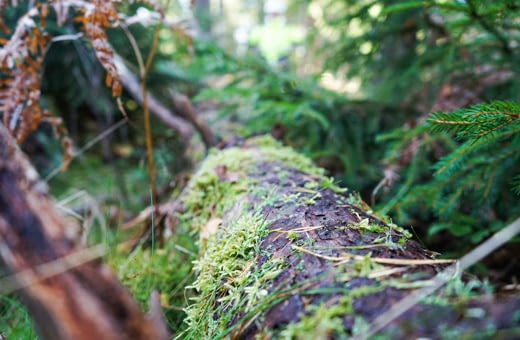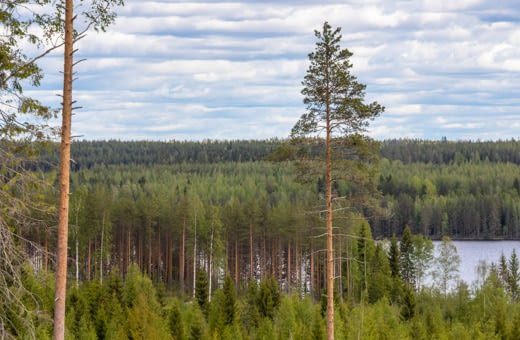Forest certification verifies that biodiversity and other environmental values are taken into consideration in forestry to an extent that meets or exceeds the regulatory requirements. At the same time, certification confirms the economic and social sustainability of operations.
Forest certification is a voluntary market-based system in which an independent party verifies that forests are managed and used in accordance with the certification requirements.
Over 90 per cent of the Finnish commercial forest area is certified, which means that forest certification has a significant impact on Finnish forests and how the Finnish forest industry operates. At the global level, approximately 10 per cent of the world’s forests are certified.
Certification guarantees that nature management is part of day-to-day operations in forestry
Having been in practise in Finland for more than 20 years, forest certification has introduced to forestry many nature management practices that exceed the regulatory requirements. Saving retention trees and decaying wood as well as buffer zones of water systems are examples of established nature management practices.
Leaving retention trees and deadwood during harvesting is required by forest certification. Retention trees help maintain biodiversity in the forest while they are alive and later they become decaying wood that is important to many species. Forest certification means that some 2.6 million retention trees are left in harvesting sites in Finland each year. Thanks to the practice of leaving retention trees, the number of large aspens – which are important for biodiversity – has multiplied over the past couple of decades, for example.
Forest certification means that some 2.6 million retention trees are left in harvesting sites in Finland each year. They safeguard the diversity of forest nature.
The primary purpose of buffer zones along water bodies is to reduce nutrient export to waterways caused by forestry. At the same time, buffer zones play a key role in protecting the biodiversity of aquatic nature. In addition, forests that are adjacent to bodies of water are often particularly diverse habitats and important for many bird species, for instance.
Certification criteria are regularly reviewed
The forest certification criteria pertaining to ecological, social and economic sustainability are reviewed on a regular basis. The requirements concerning forest management stipulated by both of the forest certification systems used in Finland (FSC and PEFC) are currently being updated. The updating processes are in their final stages and it is already clear that there will be many amendments to the criteria that are positive from the perspective of biodiversity. Stricter requirements concerning retention trees, for example, will be introduced for both certification systems.







